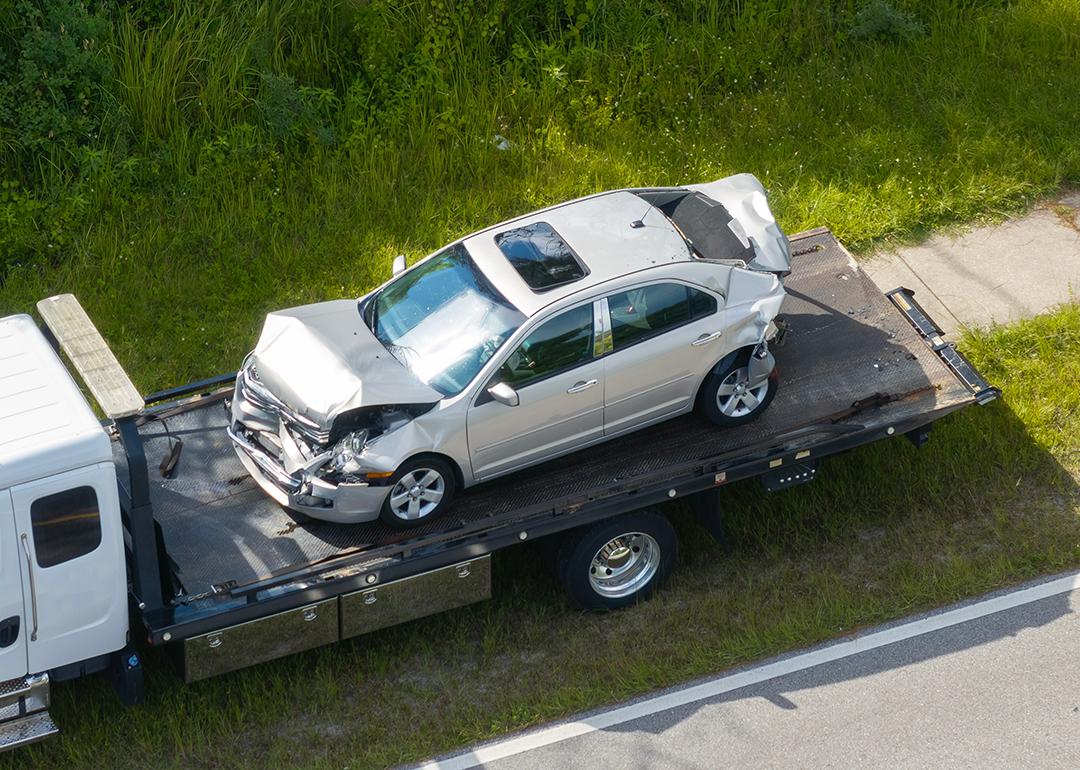
What happens when your car is a total loss?
What happens when your car is a total loss?
Discovering your car has been declared a total loss can be disheartening, but understanding the process can help you navigate the situation with confidence. A “total loss” doesn’t mean your car is a complete wreck; it simply means that the cost to repair the damage exceeds a certain percentage of its pre-accident value. This CheapInsurance.com guide will walk you through what happens when your car is totaled, the factors that influence the decision, and your options moving forward.
What Is a Total Loss?
A car is declared a total loss, or “totaled,” when the estimated cost of repairs is more than its Actual cash value (ACV). The ACV is not the car’s original purchase price, but rather its market value right before the accident, factoring in depreciation, mileage, and condition.
Insurance companies determine a total loss using two main methods:
- Total loss threshold (TLT): Many states have a specific percentage, often between 60% and 100%, that dictates when a car must be totaled. If the estimated repair costs exceed this percentage of the car’s ACV, the insurer is legally required to declare it a total loss.
- Total loss formula (TLF): In states that don’t have a set threshold, insurers use the TLF. This formula compares the sum of the repair costs plus the vehicle’s salvage value to the ACV. If the combined cost exceeds the ACV, the car is totaled.
For example, if your car’s ACV is $12,000 and the estimated repair cost is $9,000, but your state’s TLT is 75%, your car would be totaled ($9,000 is 75% of $12,000).
How Insurance Companies Make the Call
When you file a claim after an accident, the insurance company will send a claims adjuster to assess the damage. This process is how they determine if your car is a total loss.
- Damage assessment: An appraiser will meticulously inspect both the visible and underlying damage to your vehicle to estimate the full repair costs.
- Actual cash value (ACV) calculation: The insurer determines your car’s ACV by looking at its make, model, year, mileage, and condition, as well as the prices of similar vehicles in your local market. They often use industry-standard software and market data to arrive at a value.
- Comparison: The insurer then compares the estimated repair costs to the ACV, using either the state’s TLT or the TLF. If the damage is too extensive to be cost-effective to repair, they will declare a total loss.
Even if damage seems minor, underlying issues like a bent frame or structural damage can make a repair prohibitively expensive, leading to a total loss declaration.
Your Options After a Total Loss
When your car is totaled, you have several choices to make. The most common option is to accept the insurance company’s payout.
- Accepting the payout: If you accept the insurer’s ACV offer, you will sign over the title of your vehicle to them. The insurer will then pay you the ACV minus your deductible. This payout is intended to allow you to purchase a comparable replacement vehicle.
- Retaining the vehicle: Some states allow you to keep your totaled car, but your insurance payout will be reduced by its salvage value. If you choose this option, you will be responsible for all repair costs. You will also have to obtain a salvage title and have the car inspected before it can legally be driven on public roads again.
- Disputing the offer: If you believe the insurance company’s ACV offer is too low, you have the right to challenge it. Gather documentation of your car’s pre-accident value, such as recent appraisals, maintenance records, and listings for comparable vehicles in your area. Present this evidence to the claims adjuster and negotiate for a higher settlement.
The Importance of Insurance Coverage and Gap Insurance
The right car insurance coverage is your best defense against the financial consequences of a total loss.
- Collision and comprehensive coverage: These are the key coverages that protect you in a total loss situation. Collision coverage pays for damages from an accident, and comprehensive coverage pays for damages from non-collision events like theft, fire, or weather. Without these, you would be fully responsible for all costs.
- Gap insurance: If you have a car loan or lease, there can be a “gap” between the ACV and what you still owe. This happens because cars depreciate faster than you pay off the loan. Gap insurance is a supplementary policy that covers this difference. For example, if you owe $20,000 on your loan but your car’s ACV is only $15,000, gap insurance would pay the remaining $5,000 to your lender, so you don’t have to.
Understanding these coverages and how they protect you is essential for making smart financial decisions when buying car insurance.
This story was produced by CheapInsurance.com and reviewed and distributed by Stacker.



